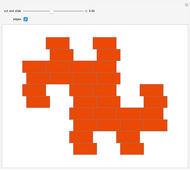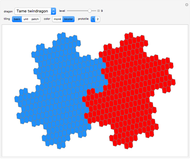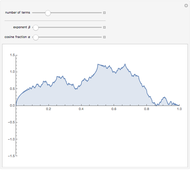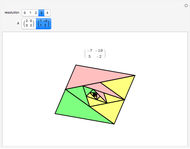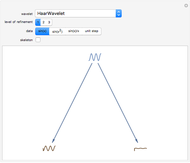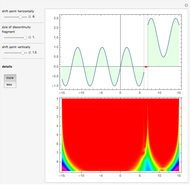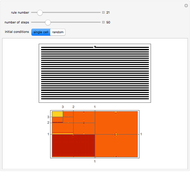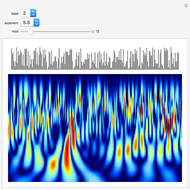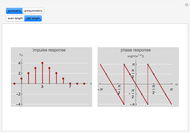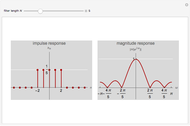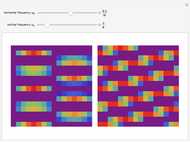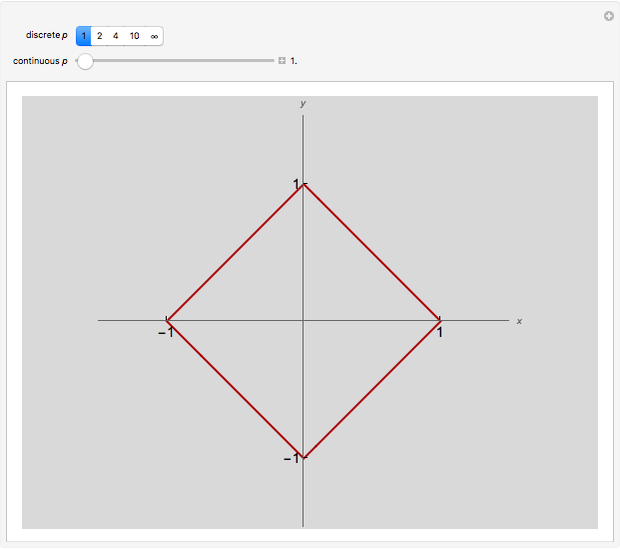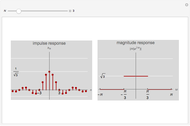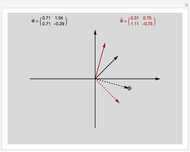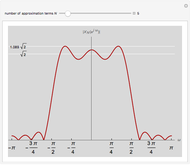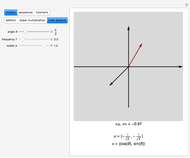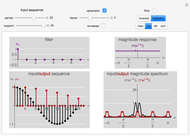Twin Dragon Wavelet

Requires a Wolfram Notebook System
Interact on desktop, mobile and cloud with the free Wolfram Player or other Wolfram Language products.
This Demonstration shows the iteration process that approximates a continuous-time, twin dragon wavelet basis from the discrete-time one. The iteration is performed on the so-called quincunx lattice. At every iteration, the resulting function tiles the space, even though it has a "fractal" boundary.
[more]
Contributed by: Jelena Kovacevic (July 2012)
Open content licensed under CC BY-NC-SA
Snapshots
Details
The twin-dragon construction in this Demonstration is one instance of the generalization of the Haar basis to multiple dimensions. It is based on the work of Lawton and Resnikoff [2], and Gröchenig and Madych [1].
In the one-dimensional continuous-time Haar basis, the associated scaling function equals  over the interval
over the interval  and
and 
 otherwise. In other words, the scaling function can be viewed as the characteristic function of the set
otherwise. In other words, the scaling function can be viewed as the characteristic function of the set  . Together with integer translates, this Haar scaling function "covers" the real line. The Haar wavelet, on the other hand, is
. Together with integer translates, this Haar scaling function "covers" the real line. The Haar wavelet, on the other hand, is  from
from  to
to  ,
,  from
from  to
to  , and
, and  otherwise. It can be obtained from two copies of the scaling function of half the length. The idea is to construct analogous multidimensional generalized Haar bases that would have, as scaling functions, characteristic functions of appropriate sets with dilation (scaling) replaced by a suitable linear transformation.
otherwise. It can be obtained from two copies of the scaling function of half the length. The idea is to construct analogous multidimensional generalized Haar bases that would have, as scaling functions, characteristic functions of appropriate sets with dilation (scaling) replaced by a suitable linear transformation.
The approach in [1] consists of finding a characteristic function of a compact set  (the square in the zeroth iteration in the Demonstration) that would be the scaling function for an appropriate multiresolution analysis. Then to find the wavelets, one would use standard techniques. An interesting property of such scaling functions is that they form self-similar tilings of the plane, a not-quite-intuitive feature for some scaling functions of exotic shapes.
(the square in the zeroth iteration in the Demonstration) that would be the scaling function for an appropriate multiresolution analysis. Then to find the wavelets, one would use standard techniques. An interesting property of such scaling functions is that they form self-similar tilings of the plane, a not-quite-intuitive feature for some scaling functions of exotic shapes.
The algorithm for constructing a scaling function for multiresolution analysis with matrix dilation  , here
, here
 ,
,
basically states that one takes a set of points belonging to different cosets of the lattice, which here has only two elements, and forms a discrete filter equal to  on these points. The filter is then iterated following the construction of wavelet bases from iterated filter banks (illustrated in the Demonstration) [4, 5]. If it converges to some compact set, it is an example of a generalized Haar wavelet. In one dimension, this is equivalent to a Haar filter converging to the indicator function of the unit interval.
on these points. The filter is then iterated following the construction of wavelet bases from iterated filter banks (illustrated in the Demonstration) [4, 5]. If it converges to some compact set, it is an example of a generalized Haar wavelet. In one dimension, this is equivalent to a Haar filter converging to the indicator function of the unit interval.
References
[1] K. Gröchenig and W. R. Madych, "Multiresolution Analysis, Haar Bases, and Self-Similar Tilings of  ," IEEE Transactions on Information Theory, 38(2), 1992, pp. 556-568. doi:10.1109/18.119723.
," IEEE Transactions on Information Theory, 38(2), 1992, pp. 556-568. doi:10.1109/18.119723.
[2] W. M. Lawton and H. L. Resnikoff, Multidimensional Wavelet Bases, Technical report AD910130, AWARE, Inc., Bedford, MA, 1991.
[3] B. Mandelbrot, The Fractal Geometry of Nature, San Francisco: W.H. Freeman, 1982.
[4] M. Vetterli and J. Kovačević, Wavelets and Subband Coding, Englewood Cliffs, NJ: Prentice Hall, 1995. www.waveletsandsubbandcoding.org.
[5] J. Kovačević, V. K Goyal, and M. Vetterli, Signal Processing: Fourier and Wavelet Representations, Cambridge: Cambridge University Press, forthcoming. www.fourierandwavelets.org.
Permanent Citation











